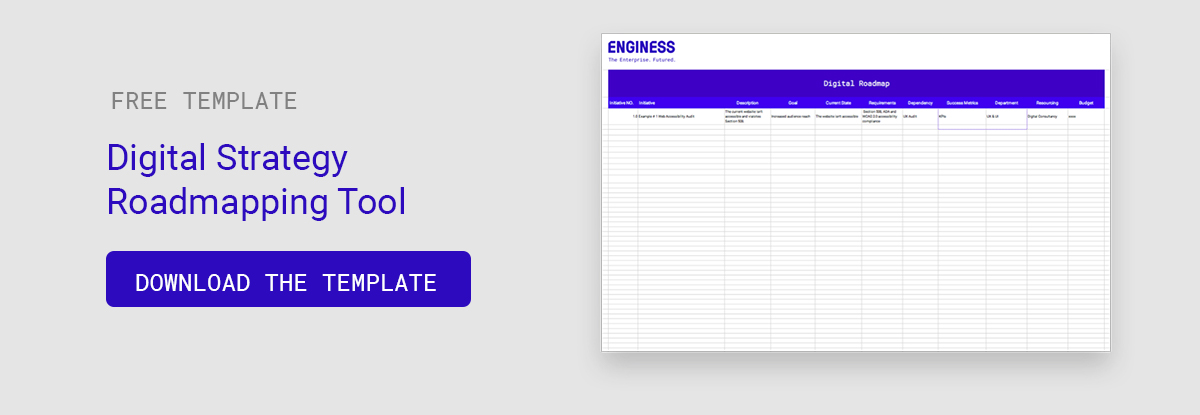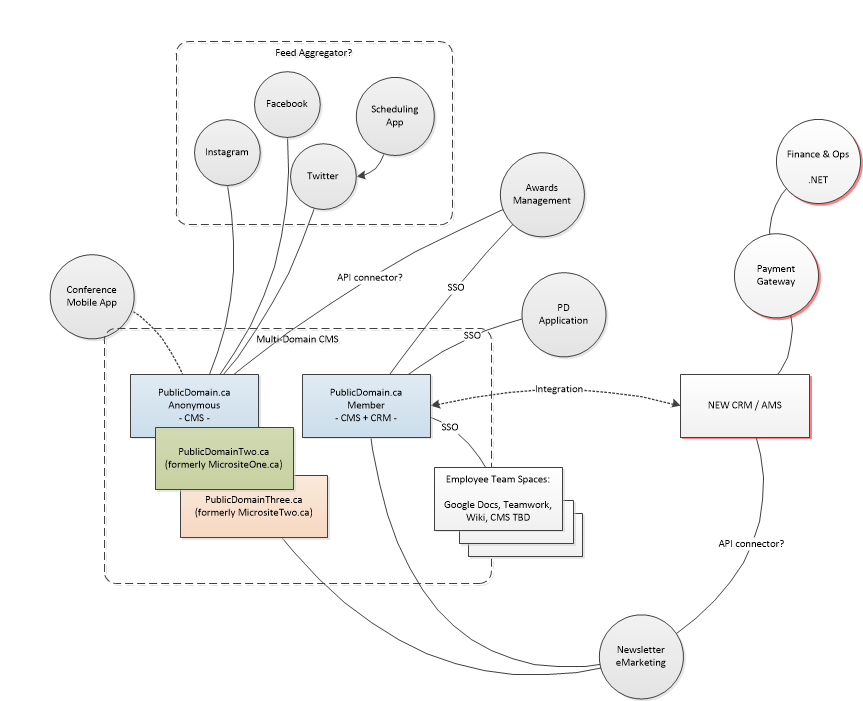Especially for complex products and applications, where you have multiple stakeholders and conflicting priorities, it can be downright impossible to build a roadmap that everyone’s happy with.
That’s why, of all the tools in our toolbox, 9/10 times we start with the simple ecosystem map. In this post, we’re going to dive into what it is, how to use it, and why you should use it to guide your complex decision making.
What is an Ecosystem Map?
An ecosystem map is a tool used to map out the various people involved in a transaction, as well as the transaction itself. For instance, say you go into a corner store and buy a bottle of milk. A simple ecosystem map of the store might include:
- The customer (you)
- The shopkeeper
- The milk delivery guy
Most maps also include the transactions involved, so in this case:
- You buying the milk at the cash register from the shopkeeper
- The shopkeeper buying the milk from the milk company
Of course, there’s a lot more to it in most businesses and for complex products. So there are a few more questions to consider:
- What are the boundaries of our ecosystem? You can take the example above out pretty far if you want. You could map the entire cold chain all the way back to the farmer and the cow (which is a fascinating story, by the way, and a true modern marvel).
- What is the issue we’re solving? Why does this ecosystem exist? What pains are being addressed, and for whom, at each stage?
- Where does this ecosystem exist? Digital, real world? What devices are involved?
- When do these transactions happen? Again, digital, in-person, online, on a third-party platform like Amazon, etc.

Here’s a great example of an ecosystem map for refugee services in St. Louis. It’s fully interactive, but you can see they’ve clumped it by service and then eventually by a provider.
Of course, your ecosystem might be a lot smaller. The point is to use the idea of a network to show you how different pieces are linked together visually and give you the ability to see what’s important, what’s not, and what the broader impacts of your decisions are.
Below is another example of a website technology ecosystem.

Figure 1: A cohesive, multi-domain management system where content can be automated and shared between domains serving different audiences.
Why Ecosystem Maps Help Drive Efficient Investment
One of the biggest problem facing digital projects is not so much that they all run over budget and time — rather, it’s that they all run over budget and time because the wrong projects gets prioritized. That means that to be effective, they have to go back and build a bunch of stuff which wasn’t in-scope in the first place to make the project a success. That ‘going back’ stage takes time and money, and that is what drives the project over budget.
An ecosystem map can help fix that by prioritizing your roadmap effectively at the start. By spending a lot of time to understand what all the moving parts are, you can get a clear picture of which ones need oil the most.
Essentially, an ecosystem map is a way to find friction in the system, so your projects start where they’re going to have the biggest impact and go from there.
Second, an ecosystem map is useful because it makes it easy to understand both the big picture and the minutia in a single visual tool.
Going back to our example from the St. Louis New Americans ecosystem map, each of those providers is listed as their full name and hyperlinked out to their own site. Suddenly, in a single tool, you can get a really clear picture of who’s connected to what. With that information, you can start to make decisions.
Evolving Your Map
As with any digital project, you need to iterate on your existing map. This will help you:
- Reprioritize based on new information
- Keep an eye on changes that you make to make sure you’re still solving the most significant problem
- Understand changing processes.
Final Thoughts
As our systems and processes become more complex, ecosystem maps are becoming more popular. Just like engineering teams use networks to visually represent the flow of data, an ecosystem map is used to show the connections we all have, and help product and UX teams understand their users, their processes, their pain, and their desired outcomes in detail. By mapping it all out, you can start to identify trends, find the real problem areas, and solve those first.
With ecosystem maps, you can vastly improve your efficiency and productivity, making sure you deliver products that have a big impact, right away, every single time.
